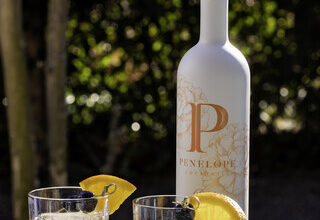Buffalo Trace Experiments With Entry Proof For Wheated Bourbons
* In the whiskey world, the topic of barrel entry proof has always led to heated discussions. Some distillers believe a higher entry proof, especially for a wheated recipe bourbon, will lead to a better end result, purporting that alcohol ages better than water. While other distillers attest that a lower entry proof leads to a more mellow, consistent finish.
The latest Experimental Collection release from Buffalo Trace Distillery investigates the entry proof debate, with all four of the experiments coming off the still at a consistent 130 proof, but put into the barrel for aging using four different entry proofs. All of the barrels were then aged together for 11 years, 7 months and bottled at 90 proof. Here are the details:
Wheat 125 – At 125 proof, this was the highest entry proof used, which also resulted in a high evaporation rate of 71% in the 11-plus years it was in the barrel. The high entry proof of this wheat recipe bourbon resulted in a well-rounded flavor with the taste being a balance of cooked berries mingled with sweet honey and slight hints of spicy cloves and pepper.
Wheat 115 – This wheated recipe bourbon was put into the barrel at 115 proof and lost the highest percentage due to evaporation, at 73%. Tasting notes for this bourbon say it is a well-balanced spirit, which was rated the best tasting by the quality analysis team at Buffalo Trace. The upfront taste is sweet and fruity, with buttery toffee notes that follow. A dry oaky finish completes the taste.
Wheat 105 – At an entry proof of 105, the angels were particularity generous with their share, taking the lowest amount of all four experiments with a rate of 62%. The 105 entry proof produced a bourbon that is a nice balance of sweet caramel, vanilla, and dry oakiness.
Wheat 90 – At an entry point of 90, this bourbon had a 64% evaporation rate as it aged alongside the other four experimental wheat barrels in Warehouse K. The result was a bourbon with more wood characters and slight sweet notes. It is mellow with hints of cedar and other wood flavors.
“This was an interesting experiment for us to conduct, and by keeping all of the variables consistent such as the proof off the still, aging time and placement next to each other in the warehouse, we were able to focus just on the entry proof into the barrel and see how it affected taste and evaporation rate,” said Harlen Wheatley, master distiller. “We were pleased that what we consider the ideal entry proof for a wheated bourbon, at 114 proof, was pretty close in proof to what we evaluated to also taste the best in this experiment – which was the 115 proof experiment. It was gratifying to see that we have been on the right track this whole time with our entry proof for our wheated recipe bourbons. Another point of interest is the higher entry proofs, the higher the evaporation rates, which is something we’ve always suspected but now know for a fact.”
These wheated recipe barrels are part of the more than 1,500 experimental barrels of whiskey aging in the warehouses of Buffalo Trace Distillery. Each of these barrels has unique characteristics that differentiate it from all others. Some examples of these experiments include unique mash bills, type of wood and barrel toasts. In order to further increase the scope, flexibility and range of the experimental program, an entire micro distillery, named The Colonel E.H. Taylor, Jr. “OFC” Micro Distillery, complete with cookers, fermenting tanks, and a state-of-the-art micro still has been constructed within Buffalo Trace Distillery.
The Experimental Collection will be packaged in 375ml bottles and will be packed 12 to a case, with three bottles of each entry proof in a case. Each label will include all the pertinent information unique to that barrel of whiskey. These whiskeys will retail for approximately $46.35 each. These rare experimental bottles should be available in late June or July.
* From Buffalo Trace press release.


